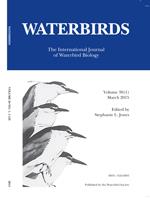Shoebills (Balaeniceps rex) breed in central-eastern Africa with a world population of only 5,000-8,000 individuals. To provide protection to this threatened species, conservationists need a better understanding about Shoebill foraging and breeding ecology, their habitat use and their distribution. For this study, nest attendance and prey provisioning were recorded with nest cameras for Shoebills in the Bangweulu Wetlands in Zambia in 2012 and 2013. Chick growth and breeding success were monitored at the same time. Parental attendance was constant in the first 40 days of chick rearing, with attending parents only leaving the nest briefly to collect water for cooling the chicks or to collect material to maintain the nest. Attendance decreased as chicks aged, but prey provisioning remained constant throughout the nestling stage at 1.2 deliveries per day. Feeding peaked during the early and late morning. Chick growth rates were as expected given the size of the species, and chicks reached a fledging mass of approximately 5.7 kg. During 2011, breeding success was particularly low (20%, n = 10 nests) due to high levels of human disturbance, with chicks being removed from nests. Parents fledged 0.89 chicks per nest (n = 11 nests) when nests were actively protected from human disturbance and theft in 2012–2013. These findings could be useful for formulating guidelines for sustainable tourism to minimize disturbance and optimize breeding success in Shoebill populations.
How to translate text using browser tools
1 March 2015
Parental Nesting Behavior, Chick Growth and Breeding Success of Shoebills (Balaeniceps rex) in the Bangweulu Wetlands, Zambia
Ralf H. E. Mullers,
Arjun Amar
ACCESS THE FULL ARTICLE

Waterbirds
Vol. 38 • No. 1
March 2015
Vol. 38 • No. 1
March 2015
Balaeniceps rex
breeding success
cameras
chick growth
nest attendance
prey provisioning
Shoebill




